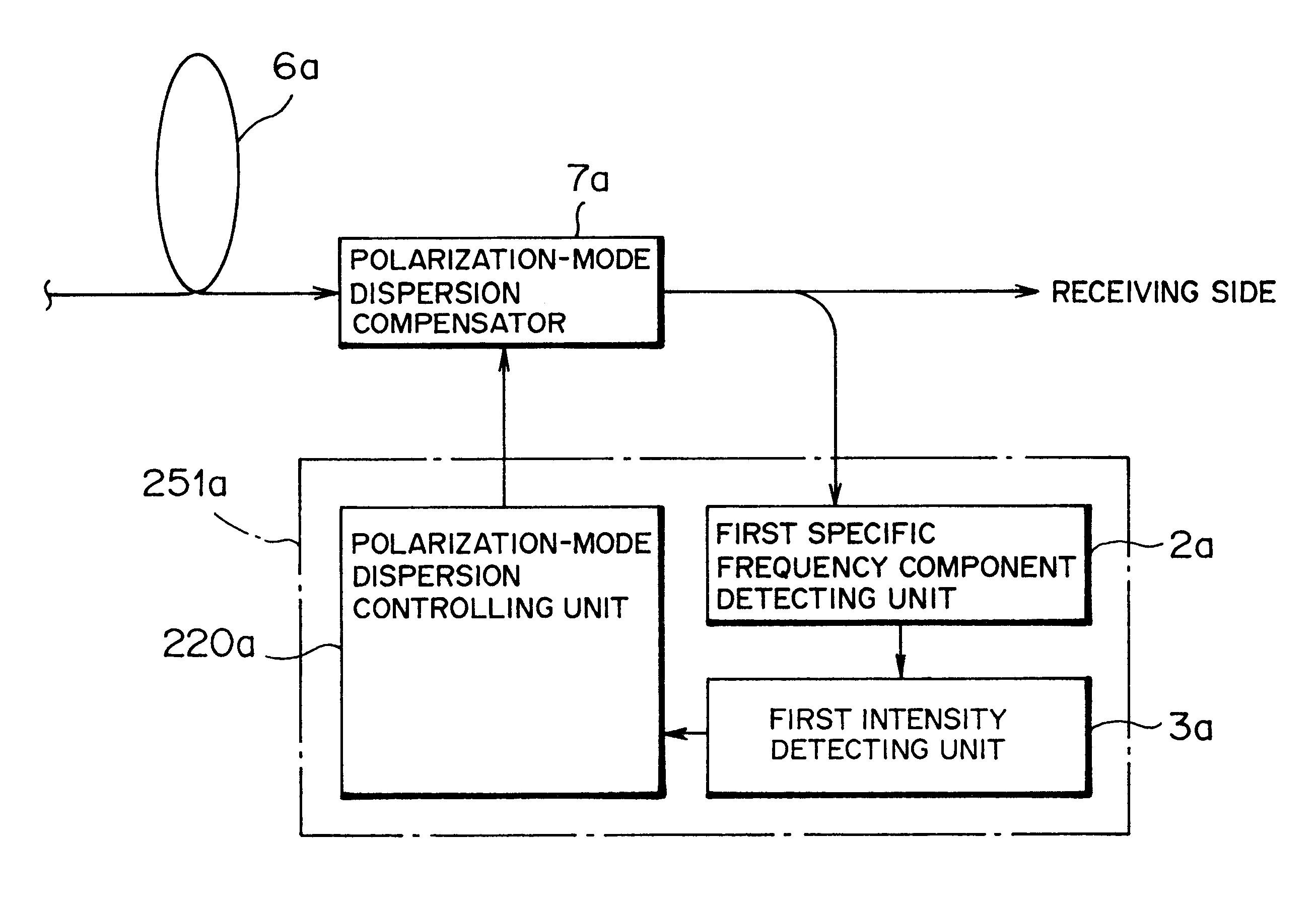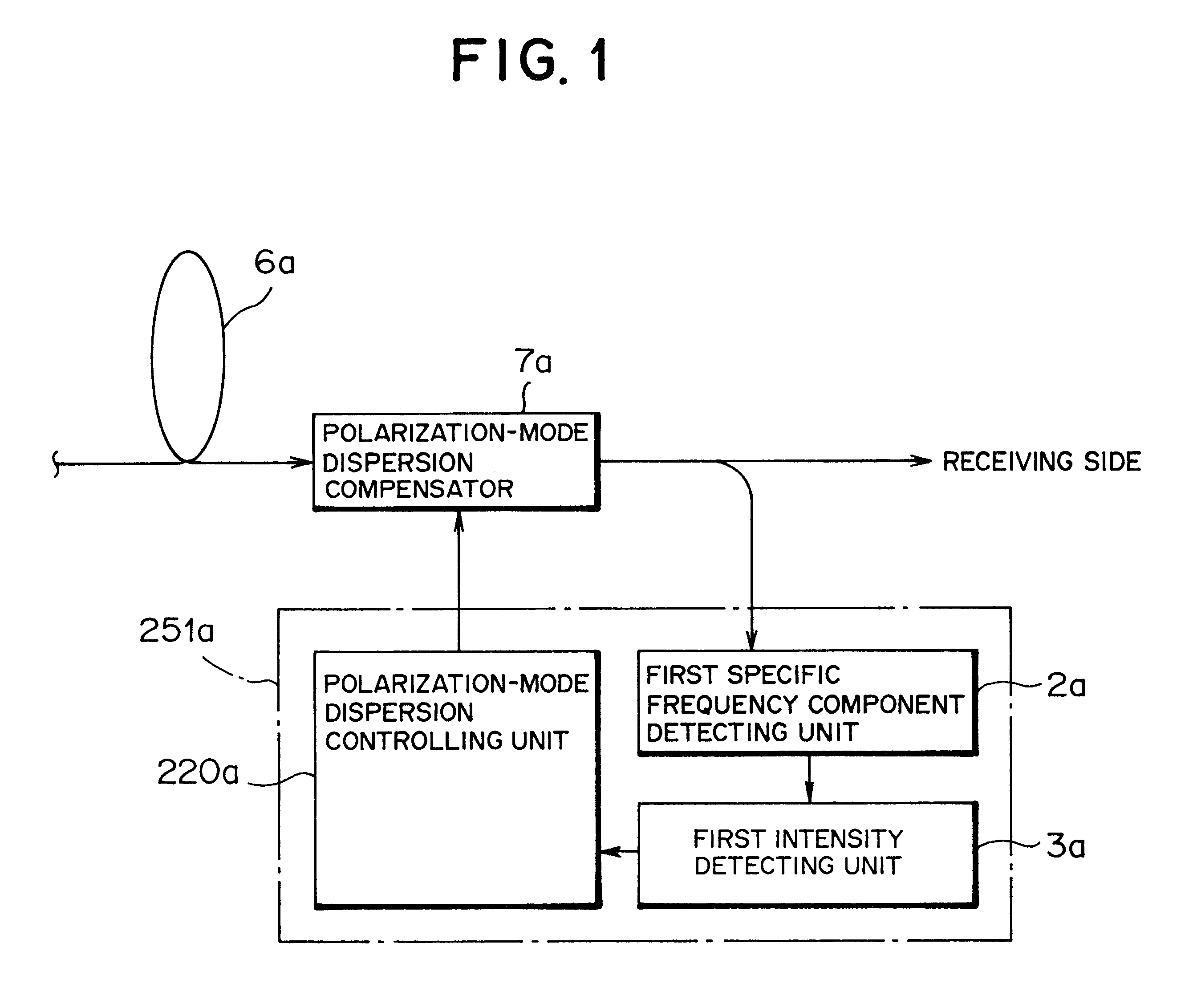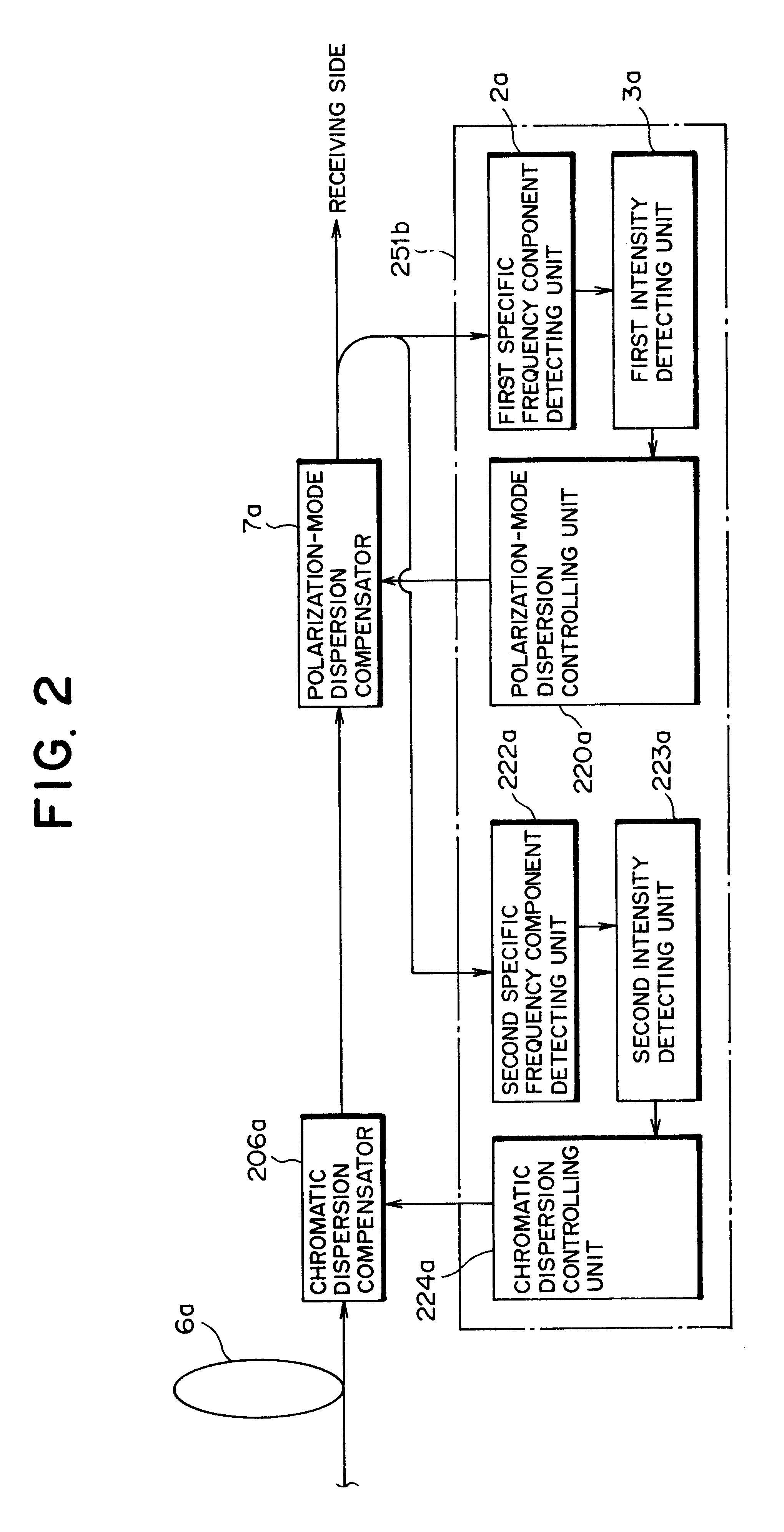Polarization-mode dispersion detecting method, and a dispersion compensation controlling apparatus and a dispersion compensation controlling method
a technology of dispersion detection and control apparatus, applied in electromagnetic receivers, electromagnetic transmission, transmission, etc., can solve the problems of inability to achieve realistic assembling of pulse methods or phase methods in optical transmission apparatuses, limited transmission distance of optical signals, and lack of accuracy, so as to prevent the deterioration of optical signal transmission waveforms
- Summary
- Abstract
- Description
- Claims
- Application Information
AI Technical Summary
Benefits of technology
Problems solved by technology
Method used
Image
Examples
first embodiment
FIG. 4 is a block diagram showing a structure of an optical transmission system to which a dispersion compensation controlling apparatus according to this invention is applied.
The optical transmission system 10 shown in FIG. 4 is an optical communication system with a transmission rate B(b / s) (for example, 40 Gb / s, 10 Gb / s or the like) adopting time division multiplexing (TDM: Time Division Multiplexing).
In the transmission system 10, an optical transmitter 2 as a transmitting terminal apparatus transmitting a transmission optical signal and an optical receiver 7 as a receiving terminal apparatus receiving the transmission optical signal are connected over an optical transmission line (transmission fiber) 3, and a dispersion compensation controlling apparatus 1 is disposed on the receiving side.
The optical receiver 7 comprises a polarization-mode dispersion compensator 4, an optical splitting unit 5 and an optical receiving unit 6. The polarization-mode dispersion compensator 4 rece...
second modification
(C) Description of a Second Modification
The method of controlling a polarization-mode dispersion quantity in the first embodiment and the modifications thereof described above is in the control mode (control mode 1) using the first function. This method may be performed in another way.
FIG. 32 is a block diagram showing a structure of an optical transmission system to which a dispersion compensation controlling apparatus according to a second embodiment of this invention is applied (the same structure is also adopted in a first modification of the second embodiment to be described later). The optical transmission system 210C shown in FIG. 32 is as well an optical communication system with a transmission rate B (b / s) (for example, 10 Gb / s or the like) adopting time division multiplexing. In the optical transmission system 210C, an optical transmitter 2 as a transmitting terminal apparatus transmitting a transmission optical signal and an optical receiver 207a as a receiving terminal a...
second embodiment
FIGS. 34(a) through 34(c) show examples of a variable optical delay path according to this invention. Each of these optical delay paths functions as the variable optical delay 227c, in which an optical signal is once taken out in the air, given a delay difference, and put back again to a fiber. The optical fibers 229a and 229b correspond to optical fibers at an input and an output of the variable optical delay 227c shown in FIG. 33. FIG. 34(a) shows a method of using a reflecting mirror 228c, FIG. 34(b) shows a method of using a corner cube 228d, and FIG. 34(c) shows a method of using a method or the like moving the fiber 229b. Incidentally, in each of the drawings, reference characters 228a and 228b denote collimator lenses.
FIG. 35 shows an example of a structure of another inter-polarization-mode variable delay unit according to the second embodiment of this invention. In an inter-polarization-mode delay element 230 shown in FIG. 35, a plurality of polarization maintaining fibers ...
PUM
 Login to View More
Login to View More Abstract
Description
Claims
Application Information
 Login to View More
Login to View More - R&D
- Intellectual Property
- Life Sciences
- Materials
- Tech Scout
- Unparalleled Data Quality
- Higher Quality Content
- 60% Fewer Hallucinations
Browse by: Latest US Patents, China's latest patents, Technical Efficacy Thesaurus, Application Domain, Technology Topic, Popular Technical Reports.
© 2025 PatSnap. All rights reserved.Legal|Privacy policy|Modern Slavery Act Transparency Statement|Sitemap|About US| Contact US: help@patsnap.com



